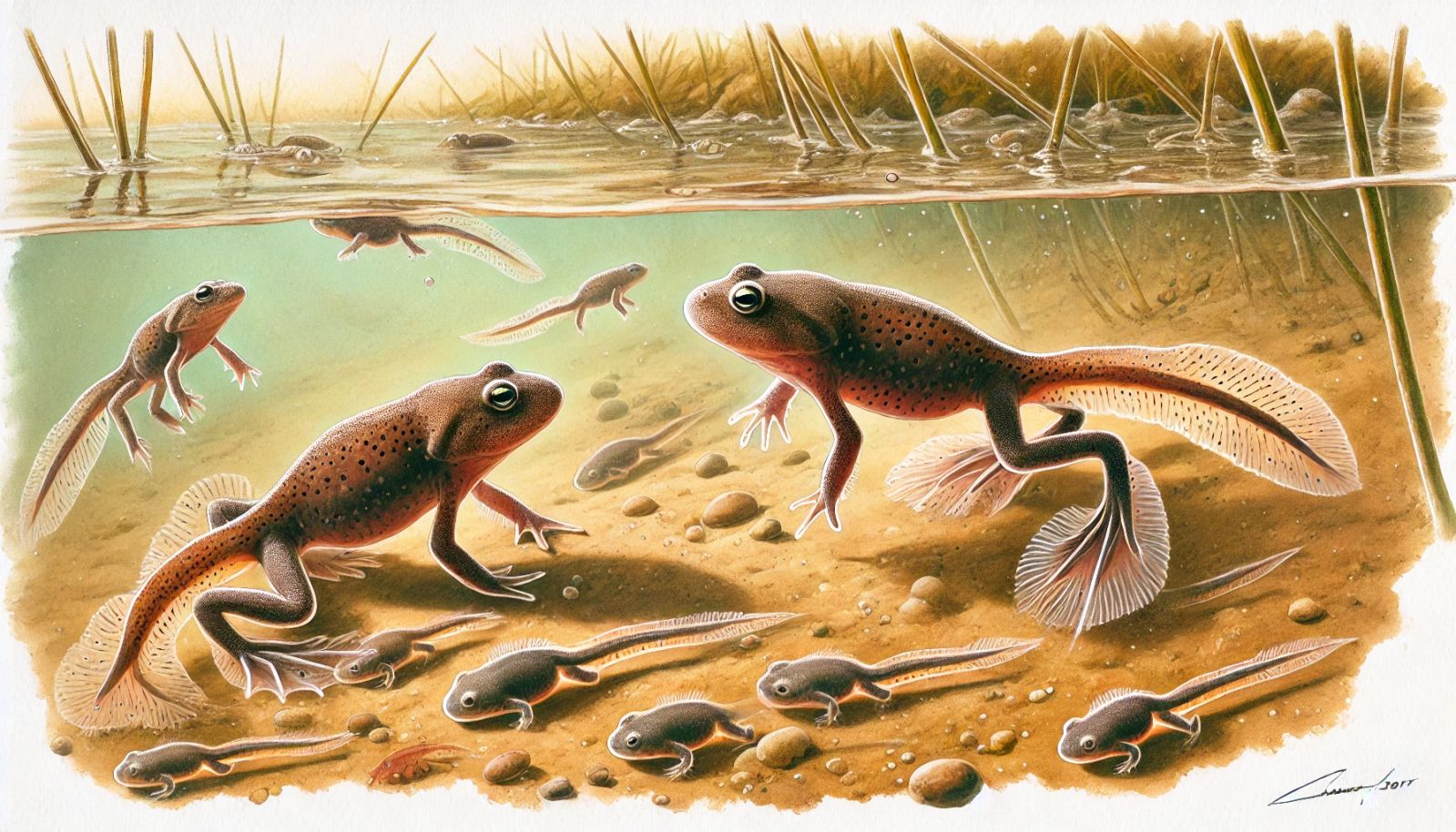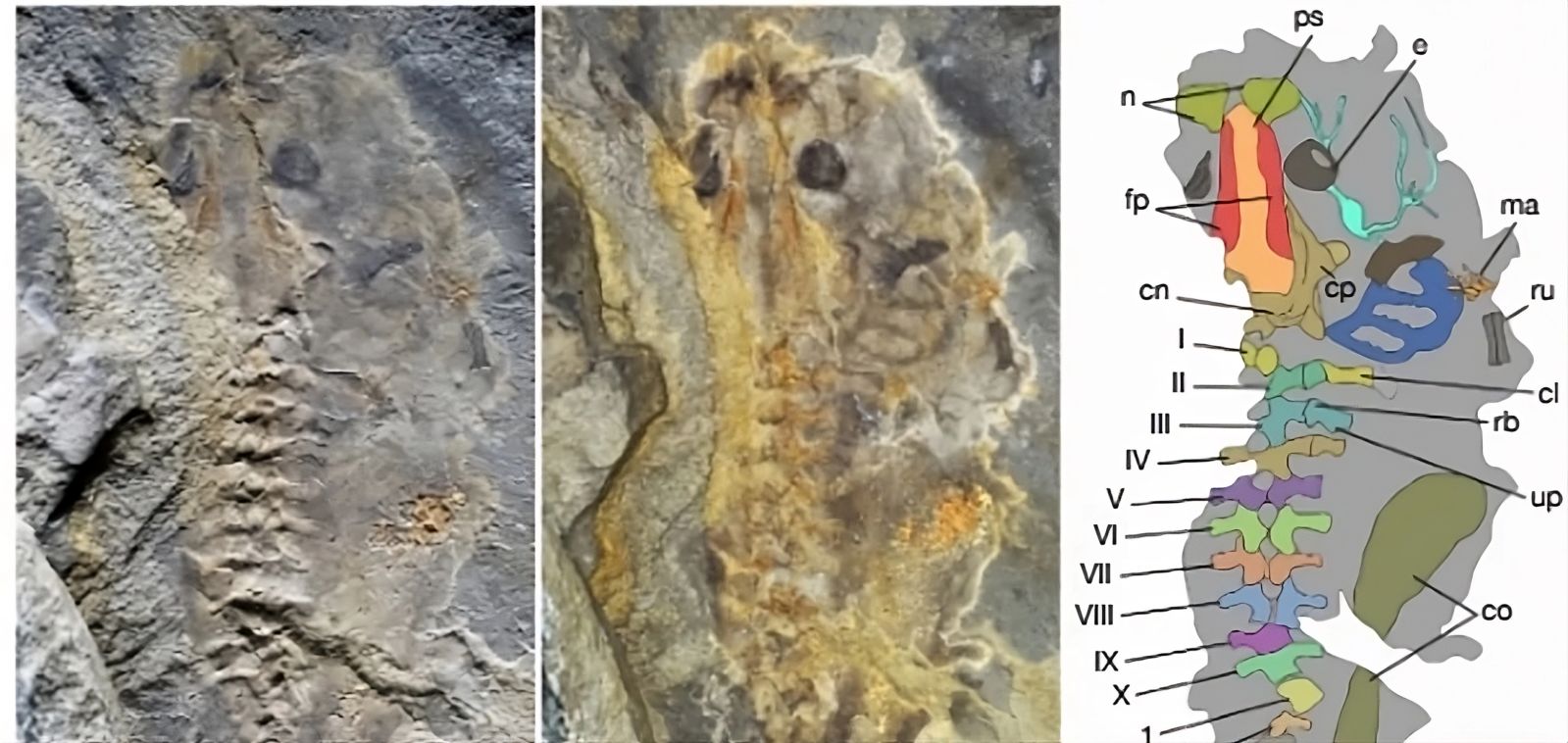Follow us on Google News (click on ☆)
This exceptional finding sheds light on a distant aquatic past where giant tadpoles roamed the ponds of the Jurassic, 161 million years ago.

Amphibians, and particularly frogs, undergo a unique two-stage metamorphosis, transitioning from an aquatic larval stage to a terrestrial adult form. But did this remarkable life cycle already exist in their early days?
Frog fossils are rare, and even rarer are those of tadpoles, those young amphibians vulnerable to predators and unstable aquatic conditions. The fossil record shows that frogs date back to the Permian, about 270 million years ago. However, until recently, no tadpole fossil older than the Cretaceous, over 145 million years ago, had been discovered.
This lack of evidence had suggested that older frog species, especially those from the Jurassic, did not go through a larval stage. However, the recent discovery of a tadpole fossil contradicts this hypothesis, suggesting that the life cycle with a larval stage already existed in that distant time period.
The specimen, associated with the extinct species Notobatrachus degiustoi, is the oldest known tadpole. Exceptionally well-preserved, it shows soft tissues, such as gills, eyes, and certain nerves.
This "giant" tadpole, measuring 16 centimeters (6 inches), shows signs of ossification, revealing an advanced stage of development. Researchers believe it was ready to begin its transformation into an adult.

Scientists have discovered a giant Jurassic frog tadpole fossil.
Its diet likely resembled that of modern tadpoles: algae, plankton, and organic debris. This dietary similarity sheds light on the evolution of stable adaptations in amphibians.
In their study, scientists also note striking resemblances between the cartilage in this fossil and that of today's tadpoles—a surprising consistency that speaks volumes about evolutionary links.
In short, this discovery proves that the biphasic life cycle, observed in modern frogs, already existed millions of years ago. An aquatic heritage still visible today.
How do frogs undergo their metamorphosis?
Metamorphosis in frogs is a major biological transformation that converts an aquatic tadpole into a terrestrial frog. Tadpoles have gills and a tail adapted for living in water, but as they grow, they develop lungs and limbs suited to terrestrial life. This process is accompanied by physiological changes, including the regression of the gills and tail.
Hormonal transformations play a key role. Thyroxine, a hormone produced by the thyroid gland, regulates the rate of metamorphosis. This hormone stimulates the growth of limbs and lungs and initiates the disappearance of organs tied to aquatic life. Thus, frogs gradually transition from water-dependent tadpoles to adults capable of living in diverse environments.
Metamorphosis is crucial for their survival and evolution. By enabling frogs to transition from an aquatic to a terrestrial environment, it offers them access to new food sources and reduces their exposure to certain predators. However, this change also makes frogs more vulnerable to alterations in their natural habitats, which are impacted by human activities.